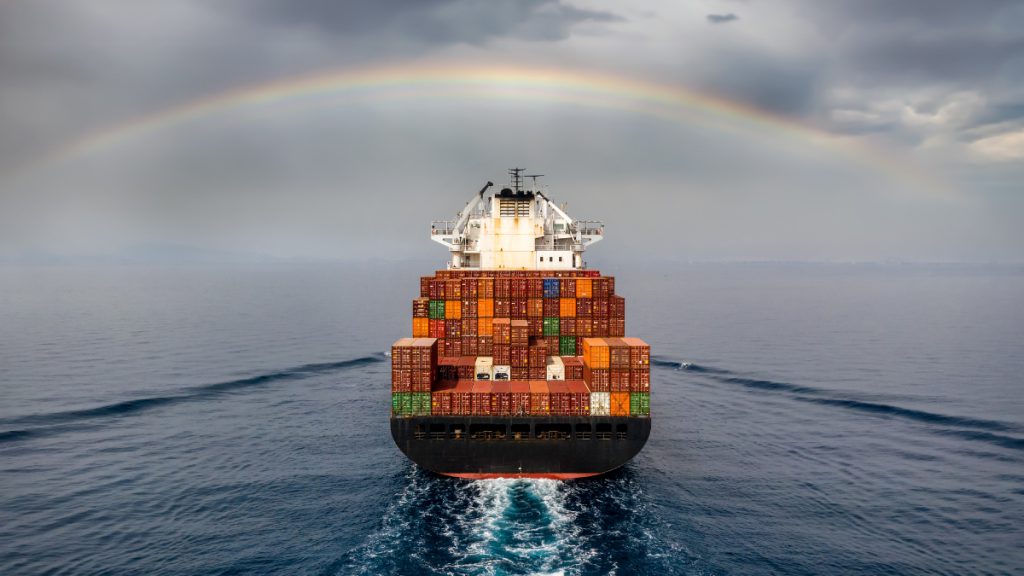The pandemic has sent shockwaves through global maritime transport and laid the foundations for a transformed industry and associated supply chains. UNCTAD expects a return to growth in 2021
Global maritime trade will plunge by 4.1% in 2020 due to the unprecedented disruption caused by COVID-19, UNCTAD estimates in its Review of Maritime Transport 2020, released on 12 November.
The report warns that new waves of the pandemic that further disrupt supply chains and economies might cause a steeper decline. The pandemic has sent shockwaves through supply chains, shipping networks and ports, leading to plummeting cargo volumes and foiling growth prospects, it says.
According to the report, the short-term outlook for maritime trade is grim. Predicting the pandemic’s longer-term impact as well as the timing and scale of the industry’s recovery is fraught with uncertainty.
“The global shipping industry will be at the forefront of efforts towards a sustainable recovery, as a vital enabler of the smooth functioning of international supply chains,” UNCTAD Secretary-General Mukhisa Kituyi said. “The industry must be a key stakeholder helping adapt ‘just-in-time efficiency’ logistics to ‘just-in-case’ preparedness,” he added.
UNCTAD expects maritime trade growth to return to a positive territory and expand by 4.8% in 2021, assuming world economic output recovers. But it highlights the need for the maritime transport industry to brace for change and be well prepared for a transformed post-COVID-19 world.
Figure 1: Development of international maritime trade and global output, 2006–2020
Responses to the pandemic
At the peak of the crisis, when the contraction of cargo volumes brought an additional challenge to structural market imbalance, the report notes, the container shipping industry adopted more discipline, cutting capacity and reducing costs to maintain profitability instead of market share.
As a result, freight rates remained at stable levels despite the depressed demand. From the perspective of shippers, these strategies meant severe space limitations to transport goods and delays in delivery dates.
To cope with pandemic-related disruptions, players in the maritime sector adjusted their operations, finances, sanitary and safety protocols as well as working practices and procedures.
In addition, several governments, through their border agencies, port authorities and customs administrations, made reforms to keep trade flowing while keeping people safe.
“Border agents, port workers and customs officials play an essential role in keeping trade moving, helping us to navigate through the crisis,” Dr. Kituyi said. “It will be important to assess the best practices that emerge from their experiences to strengthen trade facilitation in the years to come.”
Whither globalization, decarbonization?
While COVID-19 has underscored the global interdependency of nations, it has raised existential questions about globalization and added weight to the pushback against outsourcing from distant locations, the report says.
“The pandemic brought into sharp focus the topic of supply chain shortening, including nearshoring and reshoring, with less dependence on just-in-time and lean inventory models,” the report states. COVID-19 has also brought to the fore the debate over diversifying production and manufacturing sites and suppliers, it adds.
The pandemic has also exposed how unprepared the world seemed to be in the face of such a crisis, the report observes, underscoring the urgent need to invest in risk management and emergency response preparedness in transport and logistics.
It says future-proofing the maritime supply chain and managing risks requires greater visibility and agility of door-to-door transport operations.
UNCTAD’s director of technology and logistics, Shamika N. Sirimanne, said the pandemic should not push to the back burner action to combat climate change in shipping. Therefore, post-COVID-19 recovery policies should support further progress towards green solutions and sustainability.
“The momentum of current efforts to address carbon emissions from shipping and the ongoing energy transition away from fossil fuels should be maintained,” she said.
Figure 2: Annual carbon-dioxide emissions per vessel by vessel type, 2019
Harnessing the digital transformation
The pandemic has also strengthened the case for digitalization and eliminating paperwork in the shipping industry, including in ports, the report observes, reinforcing the need for standards and interoperability in electronic documentation.
Many trade facilitation measures taken during the pandemic require further investments in digitalization and automation. Accepting digital copies instead of paper originals, pre-arrival processing, electronic payments and customs automation all help speed up international trade.
On the flip side, the pandemic has also highlighted that digitalization comes with increased cyber security risks with a potential to cripple supply chains and services in global maritime trade.
The report decries the humanitarian and safety crisis caused by the pandemic, when more than 300,000 seafarers were stranded at sea for months beyond the end of their contracts – an unsustainable situation for both the safety and wellbeing of seafarers, and the safe operation of ships.
UNCTAD reiterates its call to authorities to designate seafarers as key workers exempted from COVID-19 travel restrictions.
Trends that preceded the pandemic
Besides focusing strongly on the impact of the pandemic during 2020, the report provides in-depth and detailed coverage on global maritime trade in 2019.
It says COVID-19 hit world trade after an already weak 2019, in which global maritime trade lost further momentum as trade tensions continued to bite.
They included China-US tensions, uncertainties around Brexit, complaints made by several countries against Indian tariffs, the Japan-Korea trade dispute and general moves towards protectionism. The report estimates that tariffs cut the volume of maritime trade by 0.5% in 2019.
Other notable facts and figures on global maritime trade in 2019 include the following:
- Iron ore trade fell for the first time in 20 years, by 1.5%, due to disruptions such as the Vale dam collapse in Brazil and Cyclone Veronica in Australia.
- Brazil overtook the US as the world’s largest seaborne grain exporter.
- As of March 2020, an estimated 20% of global trade in manufacturing intermediate products originated in China, up from 4% in 2002.
- The deployment of larger container vessels often increases total transport costs across the logistics chain. The capacity of the largest container vessel went up by 10.9%, but it’s mainly the carriers that benefit from the economies of scale offered by larger vessels, while ports and inland transport providers don’t necessarily benefit.
- Ports are showing more interest in strengthening connections with the hinterland to get closer to shippers and ‘anchor’ cargo volumes – in line with the push for port-centric solutions over recent years.
- China, Greece and Japan remain the top three ship-owning countries in terms of cargo-carrying capacity, representing 40.3% of the world’s tonnage and 30% of the value of the global fleet.
- Liberia, the Marshall Islands and Panama remain the three leading flags of registration, in terms of carrying capacity and of value of the fleet registered. As of 1 January 2020, they represented 42% of the carrying capacity and 33.6% of the value of the fleet.
- The flags of Iran, Taiwan (province of China) and Thailand registered the highest increases in terms of deadweight tonnage. The number of ships flying the flag of Iran quadrupled – this was due to the pressure of sanctions, which led several registries to de-flag vessels associated with trade involving the country.
Meanwhile, UNCTAD has updated its maritime profiles with 2019 data, providing a basic snapshot of each country’s situation on maritime transport and international trade, facilitating convenient cross-country comparisons.
Courtesy: UNCTAD























